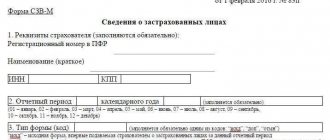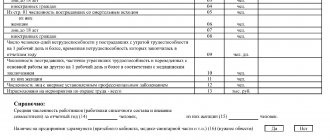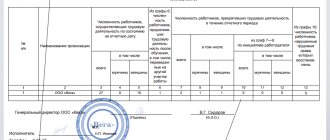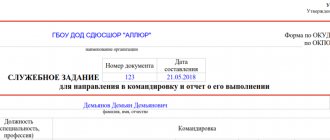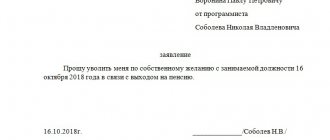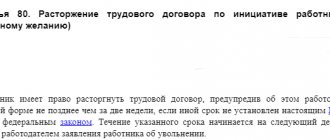What is all this?
An advance report is a primary document that confirms the amounts of money spent by accountable persons.
Accountable persons are employees of the organization who can receive funds for business needs, payments to suppliers, travel expenses and payment for services of third-party companies. An accountable person can spend money only for the purposes for which he received it.
Most often, companies issue an order with a list of persons who can receive funds on account.
There are several rules that an accountant must follow when preparing an expense report.
- We take as a basis the unified form No. AO-1 “Advance report” (Resolution of the State Statistics Committee of the Russian Federation dated 01.08.2001 No. 55 “On approval of the unified form of primary accounting documentation No. AO-1 “Advance report”). But the organization itself can set the form of the report. Please note that whatever form of advance reporting you decide to use in your organization, it must first be approved by the manager in the appendix to the order on accounting policies.
- The organization now has the right to independently set the deadline for the accountable person to submit the advance report - this must be reflected in its internal local acts, for example, in the regulation on settlements with accountable persons. The requirement to report on accountable amounts no later than 3 business days has been canceled as of November 30, 2020.
- The accountant needs to sign the advance report from the manager and chief accountant. Without these signatures, the document is not valid, which means that the organization will not be able to accept the amounts from this report for tax accounting.
Nuances of drafting
Let's consider some of the subtleties of drawing up this document. Thus, it must be drawn up no later than three days after the employee returns to work or after the expiration of the period for which these funds were allocated.
Example:
the employee received 3,000 rubles for a business trip. Upon returning from it, he goes to his workplace and must submit a report to the accounting department within three days. The following situation is also possible: an employee was given money on Monday, August 15, in order to purchase office supplies for the company. The period for which the funds were allocated is 2 days, that is, during this time the employee must make a purchase. Accordingly, the task must be completed by August 17 inclusive, and reporting must be submitted by August 20 inclusive (3 days).
If an employee was supposed to submit a report before August 20, but fell ill and went on sick leave, then the 3-day requirement is transferred to the time the employee returns to the workplace. For example, sick leave took 7 days starting from August 18. He goes to work on August 24 and has three days to submit reports. If an employee delays the required deadlines, material sanctions may be imposed on him.
How to fill out an advance report step by step?
The advance report is filled out in one copy by the accountable person and the accountant.
The report is assigned a number and date. The front side of the report indicates the name of the organization, full name of the general director, division, full name of the accountable person, position, personnel number of the employee, name of the advance.
In the tabular section, you must indicate information about the presence of a balance, overspending on the previous advance (if any), as well as the amount of the current advance. The total amount of funds received and spent, the amount of the balance or overexpenditure and information about the accounting accounts on which the report is reflected are indicated.
On the reverse side (in columns 2-4), in chronological order, the employee lists the details of documents confirming expenses; in column 5, the amount of expenses is indicated. In column 7, the accountant enters the amount of expenses accepted for expenditure, in column 9 - accounts (sub-accounts), column 8 is filled in by the accountant if the employee received the funds in foreign currency.
Please note that the employee attaches supporting primary documents specified in the advance report to the report. These documents include a cash receipt or sales receipt, invoices, PKO, etc. Without these documents, the organization will not be able to reflect production costs and deduct VAT.
The advance report includes a tear-off receipt confirming the acceptance of the report for verification. The accountant fills it out, cuts it off and gives it to the accountable person. The receipt indicates the full name of the accountable person, details of the advance report, the amount of funds issued and the number of documents.
It seems that everything is simple and clear, but there is a risk of error when drawing up an expense report.
How to correct errors in the expense report?
If you find an error in the expense report, corrections can be made according to the general rules for corrections in primary documents:
- If some incorrect entry was made (For example: an employee was given 5,000 rubles for office supplies. The actual cost was 4,278.13 rubles. When filling out the expense report, the employee made a mistake and indicated the amount of expense as 4,287.13.) In this case, it is necessary cross out 4,278.13 in one line, write down the correct amount 4,287.13 with the note “believe the corrected”, and the corrected entry must be readable;
- Nearby do about;
- The responsible employee must certify the correction with his signature.
What violations exist if there is no advance report?
If the accountable person does not provide an advance report within the prescribed period, then this is a violation of cash discipline. This violation provides for the following penalties:
- Administrative liability for the lack of primary documents. This violation is equated to a gross violation of accounting and financial reporting requirements and carries a fine of up to 10,000 rubles. In case of repeated violation, the fine increases to 20,000 rubles. (Article 15.11 of the Administrative Code)
- In terms of tax legislation, this entails penalties for additional assessments of amounts for non-payment of personal income tax and insurance premiums, and arrears of income tax (tax under the simplified tax system). Sanctions provide for a fine for an organization or individual entrepreneur in the amount of 20% of the amount of additional charges (Articles 122, 123 of the Tax Code)
Let us once again draw attention to the main violations that a tax inspector may pay attention to:
- lack of supporting documents for the advance report;
- lack of applications for the issuance of an advance report.
Controversial issues
Accountants often have questions about various nuances related to its registration. Let's consider several controversial points regarding this document:
- The employee was given 20 thousand to buy two shelves for the warehouse, but there were no goods available at that price. He purchased two shelves for 25 thousand, adding 5 thousand. In this case, an advance payment is made for the entire amount of the transaction (25 thousand), and the employee is compensated for his expenses by card or through the cash register (the employee needs to write a statement and confirm it with checks).
- If an employee is engaged in bulk purchases, an advance may be issued for several payments. For example, a technical director buys office supplies, lunches, equipment and goes on business trips 4 times a month. He does not have to take an advance before each action - he can receive a certain amount in advance, and then report on its expenditure and bring it to zero, receiving compensation if it is exceeded or, conversely, returning the funds to the enterprise’s cash desk. In this case, money is usually issued for a month, and reports are shown from the 1st to the 3rd.
- If an employee prepares two or more applications for an advance, then he can report on them in one report, if the deadlines allow this. For example, on August 1, an employee was given 10 thousand to purchase a rack with a reporting period until August 7. On the third, he purchased a stand, and on the fifth, he went on a business trip until August 15, having received a second advance of 5 thousand rubles for this. Accordingly, upon arrival, he draws up reports, which includes both the first payment and the second, breaking them down according to the purpose of the advance (household and travel needs).
- If the employee does not require compensation for overexpenditures, then it is necessary to sign a document on debt forgiveness, after which the amount must be included in non-operating income and displayed as other expenses. For example, the CEO, who has a stake in the company, quits. The company has recently been in a difficult situation, so the general director purchased some goods for his own, as a result of which a debt formed. He leaves, but does not demand a refund, so as not to finish off the company, since he has a stake in it. The debt is forgiven under the contract.
We have listed the main difficult situations that may arise when preparing documents. We hope that you now understand how to fill out the paperwork correctly and what mistakes you should avoid. Using this link, you can fill out the advance report form for OKUD 0504505 and fill it out by substituting the necessary data.
How long should expense reports be kept?
In accordance with Part 1 of Art. 29 of Federal Law No. 402-FZ, advance reports must be stored for 5 years after the reporting period. Each organization chooses the procedure for storing expense reports independently. As a rule, advance reports with attached supporting documents are filed in chronological order or quarterly.
Please note that the Central Bank has amended Directive No. 3210-U (Central Bank Directive No. 5587-U dated October 5, 2020), thereby simplifying the rules for issuing money for reporting.
These changes came into force on November 30, 2020:
- in the application for the issuance of accountable money, it is not necessary to indicate the amount of the advance and the period for which the accountable amounts are issued. You can also issue one order for several cash payments to one or more employees.
- The organization and individual entrepreneur have the right to independently set the deadline within which the accountable must submit an advance report.
- Even those employees who have not reported on past amounts received are entitled to receive funds. The requirement that an employee must account for previously issued amounts was removed from clause 6.3 of the Central Bank Instructions No. 3210-U dated March 11, 2014.
- Also, starting from 2021, accountable money can be transferred to an employee’s salary card. But then the details of the salary card to which the money is transferred must be reflected in the director’s order, or the employee must write them down in the application for reporting. And so that the tax authorities do not decide that this is an employee’s salary and do not require personal income tax to be calculated from the accountable amount, payment orders will need to be filled out in a special way. In field 24 “name of payment”, specify that the transferred funds are accountable. For example, you can make entries such as: advance payment for business needs or advance payment for travel expenses, and so on.
